DAVID MEDALLA’S TALK AT TATE BRITAIN ON WEDNESDAY, JULY 11, 2012
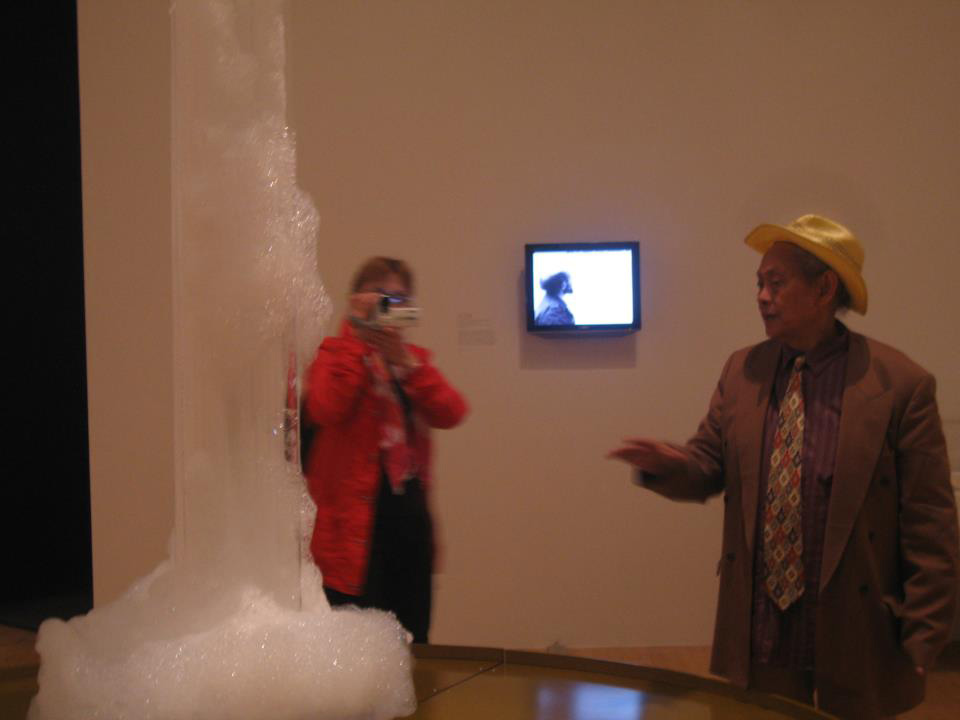
DAVID MEDALLA’S TALK AT TATE BRITAIN ON WEDNESDAY, JULY 11, 2012, AT 6:30 P.M.
The talk is free and open to the everyone.
Because of the limited seating arrangement, for tickets please E-mail asap: madeliene.keep@tate.org.uk
Artist talk: David Medalla | Tate
http://www.tate.org.uk/whats-on/tate-britain/talks-and-lectures/artist-talk-david-medalla
Talk @ Tate Britain – photogallery
https://www.facebook.com/media/set/?set=a.473125212699921.116616.100000073407533&type=3
Filipino artist David Medalla will give a talk at Tate Britain on Millbank in London on Wednesday, July 11, 2012, at 6:30 p.m.
The talk, entitled ‘Synoptic Realism: A Beginner’s Course in the School of Cosmic Beauty‘, is linked to the ‘Migrations’ exhibition currently running at Tate Britain.
Gilane Tawadros, formerly Director of InIVA (the Institute of International Visual Art). will introduce David Medalla.
Adam Nankervis, Director of ‘another vacant space’ in Berlin and Founder of Museum MAN, will deliver the closing remarks.
David Medalla is a legendary figure in world art. He is a pioneer of earth art, kinetic art, conceptual art, performance art, environmental art, participation art, video + film + installation art.
His polymorphic art works have been featured in many iconic exhibitions, including three curated by Harald Szeemann: ‘Weiss auf Weiss’ at the Kunsthalle in Bern, Switzerland; ‘When Attitudes Become Form’ at the ICA in London; and the Fifth Documenta Exhibition in 1972 in Kassel, Germany.
Medalla’s bubble-machines were shown at the Clocktower Art Gallery in New York in the ‘Travels II’ exhibition, curated by Chris Dercon, the ‘Forece Fields’ exhibition, curated by Guy Brett, at MACBA in Barcelona, at the Mori Art Museum in Tokyo, Japan, in the ‘Happiness’ exhibition curated by David Elliott, and in ‘L’Informe’, curated by Rosalind Krauss and Yve-Alain Bois, at the Centre Pompidou in Paris.
More recently, Medalla’s bubble-machines were shown at the Sydney Biennial and at the New Museum in New York.
Marcel Duchamp created a ‘Medallic sculpture’ in homage to David Medalla.
French philosopher Gaston Bachelard presented David Medalla’s first performance in Paris at the Academie Raymond Duncan (the brother of Isadora Duncan) in the spring of 1960.
French poet Louis Aragon (co-founder with Andre Breton of Surrealism), after seeing Medalla’s drawings and paintings, wrote in Medalla’s address book ‘I love all that you do.’
David Medalla edited ‘Signals’, a newsabulletin of the arts and sciences in the 60s in London.
He founded the Exploding Galaxy, a confluence of multi-media artists, in 1967.
In 1974, David Medalla co-founded with John Dugger Artists for Democray.
From 1975 to 1976, David Medalla co-directed with Nick Payne the Fitzrovia Cultural Centre in London.
From the 70s and throughout the 80s, David Medalla collaborated in a diversity of art projects with several international artists, including Oriol de Quadras, Mark Greaves, Enrico Oliviero, Mark Greaves, Kai Hilgemann, Ezio Falcomer and Steve Cripps.
In 1991 David Medalla and Adam Nankervis founded the Mondrian Fan Club in New York City.
In 1997, while on a boat with Adam Nankervis, en route to Robben Island off the Cape of Good Hope in South Africa, David Medalla conceived the idea of an international participatory art project called the London Biennale.
The London Biennale has mounted numerous art events since the start of the new millenium.
American poet Mark Van Doren recommended David Medalla (a child prodigy from the Philippines) as a student at Columbia Univerisity in New York.
A few years after his arrival in London, Sir William Coldstream appointed David Medalla staff student advisor at the Slade School of Art. David Medalla worked as a lecturer at Chelsea School of Art and Saint Martin’s School.
David Medalla has also lectured in many educational institutions around the world, including the Sorbonne in Paris, the University of Amsterdam, the University of the Phillippines, the University of Hawai’ in Manoa,
the University of Texas in Austin, the University of Nevada in Las Vegas, Boston College of Art and Design, Hunter College of New York, the British School in Rome, and the Academy of Fine Arts in Florence, Italy.
David Medalla performed in the Academy in Venice, the Brera Academy in Milan, and Teatro Filodrammatico of Piacenza, Italy.
David Medalla performed with Shoe Taylor-Guinness in the British Museum.
Medalla performed at midnight in Kurt Schwitter’s MERZ Barn in Cumbria.
More recently, David Medalla performed with Adam Nankervis at the HIAP sponsored-event, curated by Marita Muukonnen, in KIASMA the museum of contemporary art in Helsinki, Finland.
David Medalla’s ‘Coral Island Sculpture’ photo-montage art work is currently on show in the ‘Ends of the Earth:
Land Art until 1974’, curated by Philipp Kaiser and Mi Won Kwon, at MOCA Museum of Contemporary Art in Los Angeles, California, USA.
David Medalla will give a talk about his new projects including the towers of night-blooming flowers in August 2012 at ‘another vacant space’ in Berlin.
In September 2012 David Medalla and Adam Nankervis will perform their ‘Homage to Clarice Lispector’ at Galeria Baro in Sao Paulo, Brazil.
In November, the Ateneo de Manila University will confer on David Medalla the ‘Gawad ng Lahi’ Award, to coincide with his solo show entitled ‘Tuloy Po Kayo’ (‘Please Come In: Welcome!’), curated by Ramon Lerma and the Ateneo Art Gallery team, at the Ateneo Art Gallery in Quezon City, metro-Manila, Philippines.
This year (2012) several books have been published on David Medalla’s art, including a conversation with Nick James, published by CV Archives in London, and a book edited by Purissima Benitez-Johannot published by Vibal Books in the Philippines, with essays on Medalla’s art by Guy Brett and Adam Nankervis and an insightful comment on Medalla the nomadic world artist by American writer John Strausbaugh.
Vittoria Biasi wrote: “David Medalla, Fontana, Soto, Elswort Kelly, N Group, Dorazio, Castellani, Manzoni with other artists, coming from different geographical and cultural areas, are invited to Uto Kultermann in the sixties at the exhibitions on the white monochrome. The white line that draws the demarcation by the second middle of the century introduces a quiver of the creativity and a social, political and artistic transformation. At the exhibitions of Leverkusen that underline the participation of several artists about the languages of the white, Medalla introduces the dream, the fascination and the mistery of the life that throbs in the matter. In the serial Cloud Canyons, the artist proposes the sculptural work realized with soap emulsified inside the water: it is the methaphor of the sea, of the sky, of the ground. The idea of the totality, of the origin of everything consists of title and work, where the first becomes extension of the other. The natural symbology goes into the world from which the work comes from. Guy Barret compares the stories of the Venezuelan Soto and of the Filipino Medalla, for the innovations introduced in the sculptural art, started at the centre of London art Signals. The historian proposes the reconstruction of the bonds, of the connections between the personal story, the artistic research and the cultural scene of the time, for reflect upon the Eurocentric convinction that considers the avant-garde a Western phenomenon. In that sense David Medalla has pursued the linguistic extreme of the creativity in a correspondence between art and life according to a concept of total art. The poetics of his performances is led by minima signs, marks of a fascinating past.” Vittoria Biasi (2007 Urbi et Orbi, studio.ra, Rome)
.-.-.
Vittoria Biasi, scrisse: “David Medalla, Fontana, Soto, Elswort Kelly, Gruppo N, Dorazio, Castellani, Manzoni con altri artisti, provenienti da diverse aree geografiche e culturali, sono invitati da Uto Kultermann negli anni ’60 nelle mostre sulla monocromia bianca. La linea bianca che segna la demarcazione verso la seconda metà del secolo introduce una vibrazione di creatività e trasformazione socio-politico e artistico. Nelle mostre di Leverkusen che sottolineano il coinvolgimento di numerosi artisti attorno ai linguaggi del bianco, Medalla introduce il sogno, l’incanto e il mistero della vita che pulsa nella materia. Nella serie Cloud Canyons, l’artista propone l’opera scultorea realizzata con sapone emulsionato nell’acqua: è la metafora del mare, del cielo, della terra. L’idea della totalità, del principio del tutto si compone tra titolo e opera, dove il primo diviene estensione dell’altro. La simbologia naturale entra nel mondo da cui discende l’opera. Guy Barret pone in rapporto le storie del venezuelano Soto e del filippino Medalla, per le innovazioni apportate nell’arte scultorea, iniziata nel centro d’arte londinese Signals. Lo storico propone la ricostruzione dei legami, delle relazioni tra la storia personale, la ricerca artistica e il panorama culturale del tempo, per riflettere sulla convinzione eurocentrica che considera l’avanguardia un fenomeno occidentale. In tal senso David Medalla ha inseguito l’estremo linguistico della creatività in una corrispondenza tra arte vita secondo un concetto di arte totale. La poetica delle sue performance è guidata da segni minimi, impronte di un oltre coinvolgente.” Vittoria Biasi (2007 Urbi et Orbi, studio.ra, Rome)

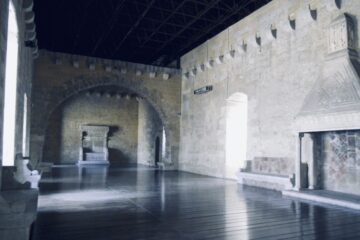
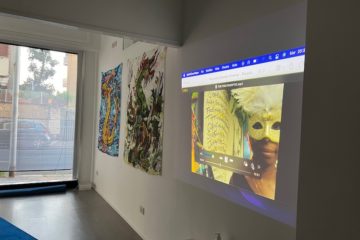
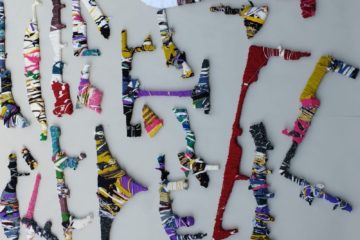
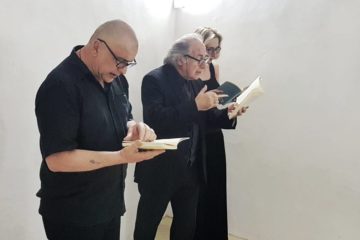

No Comment